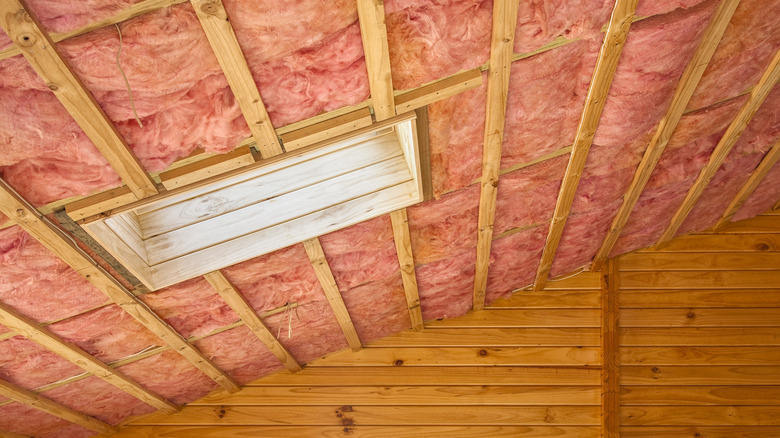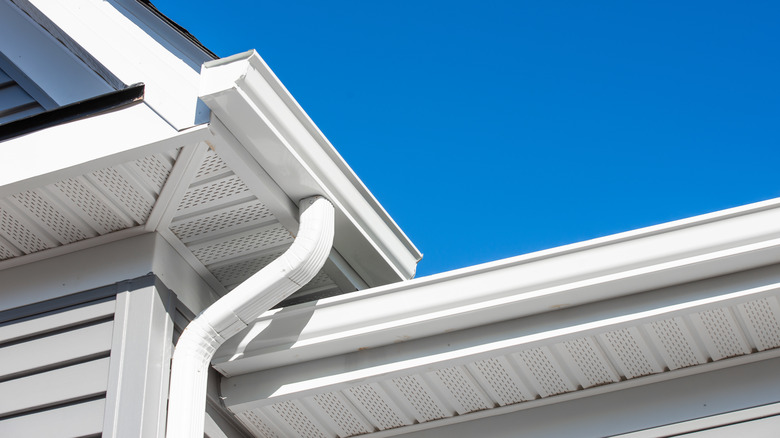The One Area You're Forgetting When Cooling Down Your House In The Summer
It's blazing hot outside, and you've done everything you can think of to keep your house cool. The AC is working overtime, all the curtains are drawn, and you've got fans going in every room. But despite all your efforts, your house still feels a little too warm. You start wondering if your AC is on its last leg or if maybe you need to invest in some fancy new cooling gadget. But here's the thing — you might be missing a major piece of the puzzle: your attic.
Yes, that dusty space where you stash holiday decorations and old keepsakes is more important than you might think when it comes to keeping your home protected in extreme heat. If your attic isn't properly insulated and ventilated, it can turn into a giant heat trap, radiating warmth down into your living spaces and making it feel like your air conditioner is fighting a losing battle. So, before you start shopping for a new fan or messing with the thermostat again, learn more about how your attic is a critical area for cooling your home and how addressing this space can lead to a more comfortable and energy-efficient summer.
The role of attic insulation in keeping your home cool
Think of attic insulation as your home's shield against the sun's relentless rays. When your attic is properly insulated, it helps keep the scorching heat out, making it easier to maintain a comfortable temperature inside.
You've got a few options when it comes to attic insulation. Fiberglass is a popular go-to because it's the most budget-friendly (it's easy to install on your own) and does a great job at keeping things warm. Just watch out for skin and eye irritation during DIY installation. Meanwhile, cellulose is made from recycled paper, so it's eco-friendly and great at filling in all those tiny spaces. However, it can settle over time and is susceptible to moisture damage. It's important to have a professional install your cellulose insulation to avoid problems and keep it working well over time. Lastly, spray foam is great for sealing everything tightly and keeping both heat and moisture out, but it's pricier and also needs a professional to install.
If you're wondering whether your current attic insulation is up to snuff, check its R-value. This number tells you how well the insulation resists heat flow — the higher the R-value, the better it performs. If your attic's insulation is looking a little thin or outdated, adding a few more inches or upgrading to a better material can make a world of difference in beating the summer heat and enhancing your home's AC efficiency.
Ventilation: Another key to a cooler, healthier attic
Insulation is important, but it's not the only thing that matters when it comes to attic cooling. Ventilation is the other half of the equation, and it's just as crucial for keeping your house comfortable during the summer. Ventilation is all about keeping the air moving in your attic to stop moisture from building up and to keep heat from getting too intense. It uses vents and fans to let fresh air in and stale air out, which helps control humidity and prevents issues like mold and roof damage. There are a few ways you can improve your attic's ventilation. For instance, soffit vents, which are installed under the eaves of your roof, let cool air in, while ridge vents along the roof's peak allow hot air to escape.
And good ventilation helps prevent moisture buildup on those hot, humid summer days when moisture can start to collect in your attic, leading to problems like mold and mildew. Not only is that bad news for your home's structure, but it can also mess with your indoor air quality. So, keeping your attic well-ventilated isn't just about comfort and reducing your energy costs at home; it's also important for your health.


